There are many things in farming we cannot control, like the weather or the markets/prices, so we must then work hard on things that are in our control. Animal health is one of the pillars of a successful farming enterprise. A healthy herd or flock is a profitable one with low antibiotic usage and good welfare.
A biosecurity plan for your farm plays an important role in this.
No farmer needs to be told the price of disease outbreaks on our farms. We are too often left looking for the solution when a problem occurs. What if there were an easier way? We do many things well, but an area we are weak on is biosecurity, or keeping disease out.
Five ways disease can enter you farm
1 Animals: The number one way disease can enter our farms and by far the greatest risk is purchased animals. Neighbours’ animals breaking in or having nose-to-nose contact also poses a risk. While sick animals being brought in are an obvious risk, it is those animals which look healthy but are incubating or carrying disease that can catch us off guard. Disease outbreaks can too often be traced back to a purchased animal.
Examples are abortion agents in ewes or IBR/Johne’s disease in cattle.
2 People: Another risk is from people or equipment. Although a lower risk, we must be mindful that people coming on to our farms could be carrying disease. When I worked in veterinary practice I liked to see wash facilities and disinfection points when I entered and left farms. This sends a clear message about how serious you are around biosecurity.
People can carry diseases such as cryptosporidium on unwashed boots if they have been in contact with infected animals.
3 Feed: Feed can also be a risk factor for bringing in disease. And there is a risk of it getting contaminated inside the gate also.
An example would be feed contaminated with dog faeces, which could spread Neospora abortion.
4 Water: Water sources and streams can potentially carry disease and contamination. Salmonella can potentially be spread in water ways.
5 Wildlife: Vermin and wildlife pose a risk by carrying disease. Mice present a toxoplasmosis risk and badgers carry a TB risk.
Five essential elements of a biosecurity plan
1 Know your status: Know the disease status of your herd and decide if you can operate a truly closed system. If not, always try and source animals from herds and flocks where you have some knowledge of the disease status. Every animal bought in needs to be examined and put into quarantine; 30 days is recommended but a minimum time of three to four days is required at the very least. This is always seen as excessive and very theoretical but there is nothing theoretical when disease outbreaks occur.
2 Disinfection points: Have a good disinfection point clearly labelled on entry points for all visitors. Have high-pressure water, brush and covered disinfectant. All visitors must wash on entry and ideally on leaving your farm.
3 Secure boundaries: All boundary fences should be secure to prevent nose-to-nose contact of stock. Farmers sometimes think this is way too extreme, but I was on a farm last year with a BVD breakdown and the source was a neighbour who unfortunately kept a PI animal.
4 Waterways: Fence off waterways where stock can risk contamination, this is rarely done and is arguably a much lower risk but it is a risk all the same.
5 Quarantine: Have a quarantine facility or turnout area for new arrivals. This is rarely done on Irish farms but it could save you lots of hardship and is something we need to get more serious about.
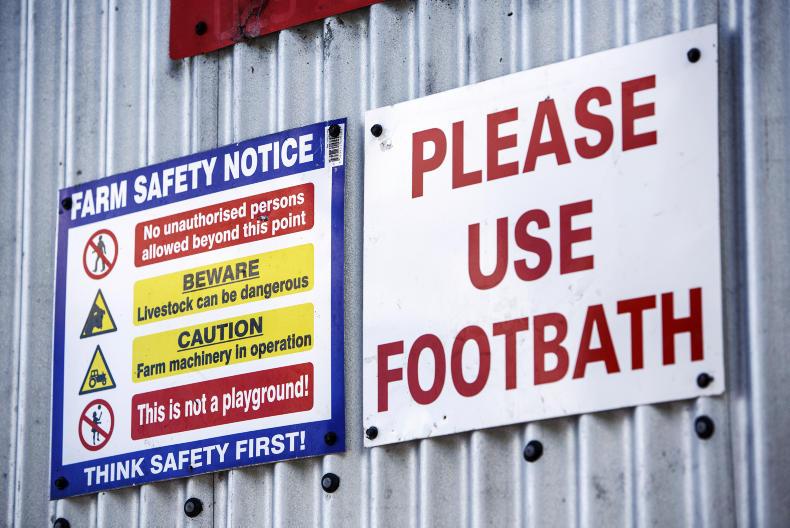
Every farm needs a working disinfection point on the entry of the farm for all visitors.
The top cattle and sheep diseases
Cattle
IBR – This virus is associated with respiratory signs but can cause milk drop, infertility and abortions in cattle. It is spread by aerosol spread with close contact. Once an animal is infected with the virus, they can be infected for life and may shed it intermittently.
Vaccination definitely helps with the control of IBR in herds. When animals are being bought into herds that are free of IBR they can be blood-tested for antibodies over a period of time.
The main spread of the virus from farms is by bought-in animals. Vaccination makes sense to protect your farm.
An IBR eradication programme would be a huge step forward for our cattle industry but would take buy-in from everyone.
Leptospirosis – This is a bacterial disease that can cause milk drop or infertility in cattle herds. The bacteria can be in the kidneys and can be shed in urine. It can affect both cattle and humans. Cattle can appear healthy when buying them in but could be shedding the bacteria.
Vaccination works very well to control this disease and stock bought from herds vaccinating for greater than five years are very low-risk once vaccination is being done correctly.
Johne’s disease – This is caused by the bacteria mycobacterium paratuberculosis and is usually transferred to young animals in faeces from older infected animals. Animals may appear healthy but towards the end of the disease you can get weight loss with chronic scouring. It can also affect milk yield, fertility and even milk production.
When buying animals in, blood testing is a way of testing for it. The blood tests are not very sensitive but, combined with knowledge about the farm of origin, can be useful.
Any herd selling cattle for breeding should consider establishing herd-level Johne’s status to add value to stock being sold. This involves a long-term approach to testing and applying control measures to reduce its spread.
It is a very slow disease and needs continual monitoring. All dairy farms should be involved or signed up to the Johne’s control programme.
Bovine TB – This bacteria is shed in bodily secretions in cattle, most commonly in nasal secretions or respiratory aerosol. The big risks are brought-in animals or wildlife contaminating feed or water.
All feed stores must be secure and sheds where feeding takes place should be badger-proof. Raising water troughs outdoors also might help avoid contamination.
Once animals are identified with TB, they need to be isolated and removed quickly.
Sourcing animals from herds with clear TB status reduces your risk.
BVD – With our national eradication programme in place, we are now seeing fewer and fewer incidents of BVD. This disease can still be tested for but rarely is. Pregnant animals pose a risk because we have no idea what the status of the foetus is?
The huge risk has always been bringing in a persistently infected (PI) animal. Boundary fencing is important, with distances of 3 metres recommended between stocks.
While vaccination reduces the risk, it is still a disease we need to consider in our biosecurity plan. Only purchase animals from herds with a clear BVD status for the last four years.
Salmonella – This bacteria can cause scour, abortions and septicaemia, among other symptoms in infected cattle. Infected animals can shed the bacteria for months after treatment or being sick. These animals can appear healthy but act like carriers. Some infected cattle store the bacteria in the gallbladder so we see increased shedding, causing liver damage from fluke infections.
Vaccination definitely helps control the disease but it is important we try and minimise our risks of introducing the bacteria on to our farms. Blood tests can be of some value when buying in stock along with quarantine of animals.
Rodents and birds are said to also carry the disease, meaning that we must try to minimise wildlife access to feed.
For dairy farms, bulk milk testing can be used over time as a monitoring tool for salmonella.
Digital dermatitis – This is an infectious lameness affecting the feet of cattle usually found at the back of the feet or sometimes at the tip of the toe. It causes severe lameness and pain spreading through the herd, especially at times like housing.
When introducing cattle to a farm lift any lame legs and it is recommended to wash feet and inspect cattle where possible for any lesions. All cattle introduced to a new herd should have at least one to two runs through a footbath while in quarantine.
Something like copper sulphate can work well as a footbath agent.
Ensure anyone doing foot work with your cattle has disinfected their equipment between farms.
A simple tip would be never allow any lame animals to enter your herd.
Neospora – This causes abortion in cattle and can be spread in two main ways, from dam to foetus or by infected dog faeces being consumed by cattle.
Farm dogs must be kept away from feed stores and must not be allowed consume placentas or afterbirths. Foxes are also thought to spread the disease. Great care should be taken by people walking dogs on the land.
Replacement animals can be blood-tested to check for the disease, but for accuracy it is recommended that they are retested in late pregnancy.
Bluetongue and Schmallenberg virus – Both of these viruses can be spread by midges. Often once animals are infected symptoms may not be detected. If infected at certain times during pregnancy, abortions may occur. Stopping spread on to your farm may prove difficult, but fly control may help during the summer months or when midges are active.
Ringworm – A fungal skin disease where animals can carry the spores on them and cause infections where herds are immunoniave. Anti-fungal washes work well, but never buy in cattle with lesions. Where this happens, ringworm can spread rapidly through the naive herd.
Sheep
Contagious abortion – A closed flock will mitigate most of the risk around enzootic abortion. The main risk is buying in infected sheep. Vaccination works well to protect your flock if it is not present but vaccinating carriers can have poor results, with them continuing to potentially abort and shed the bacteria.
Some farms have used antibiotics during pregnancy to control the disease. While this is acceptable under veterinary advice during an outbreak, it is not a control measure.
Enzootic abortion is a disease no farmer wants, so careful decision-making and good vaccination help reduce the risk.
Infectious lameness – This continues to be a big problem for sheep farmers, with footrot and CODD being the big two. CODD (contagious ovine digital dermatitis) is definitely on the increase. This can cause a reddening above the hoof and sloughing off of the horn tissue. When this enters a flock it can spread rapidly.
The main source of spread between flocks is infected sheep or carriers of the disease. No one should buy in lame sheep to a flock and lifting feet of new arrivals on quarantine is good practice. The use of footbaths for new arrivals can also reduce infections being introduced.
Again, this will seem like work, but not as much work as trying to manage and control a lameness outbreak in your flock.
Chronic diseases of sheep – There are a number of what we call iceberg diseases in our flocks that we must try avoid buying in. The problem with these is testing may be difficult and sometimes expensive. Disease such as Johne’s and maedi visna can be difficult to test for.
Any farmer purchasing sheep should make sure they at least get checked for BCS and have no nasal discharges. CLA is also a disease we do not want to buy in and can show up as abscesses around the neck and head.
Sourcing from flocks with some proactive control around these diseases makes sense.
Parasites for both sheep and cattle
The main source of parasites is bought-in stock. They can be carrying fluke worms and skin parasites. This is again why we should check all animals on entry to the farm. While very few if any farms will check cattle arriving by doing faecal egg counts, it is very important that animals get a good anthelmintic dose before being turned out, especially on farms that are fluke free. With sheep we recommend a quarantine dose to eliminate resistant worms as there are much more resistance issues in our national flock.
All animals in farms that are fluke free should receive a fluke dose and then be turned out to pasture 48 hours later.
A quarantine dosage plan should be built with your vet to suit your farm.
The questions is do you need to fluke and worm all new arrivals on your farm after quarantine and what active ingredients should you use?
With more and more cases of mites in cattle and sheep make sure to check cattle and sheep skin for signs of scratching.
People will find much of this excessive and it is of course much easier to lower the ramp and let them off. Remember disease costs money, time, welfare and antibiotics.
Proactive biosecurity is going to have to be part of farming of the future in Ireland.
There are many things in farming we cannot control, like the weather or the markets/prices, so we must then work hard on things that are in our control. Animal health is one of the pillars of a successful farming enterprise. A healthy herd or flock is a profitable one with low antibiotic usage and good welfare.
A biosecurity plan for your farm plays an important role in this.
No farmer needs to be told the price of disease outbreaks on our farms. We are too often left looking for the solution when a problem occurs. What if there were an easier way? We do many things well, but an area we are weak on is biosecurity, or keeping disease out.
Five ways disease can enter you farm
1 Animals: The number one way disease can enter our farms and by far the greatest risk is purchased animals. Neighbours’ animals breaking in or having nose-to-nose contact also poses a risk. While sick animals being brought in are an obvious risk, it is those animals which look healthy but are incubating or carrying disease that can catch us off guard. Disease outbreaks can too often be traced back to a purchased animal.
Examples are abortion agents in ewes or IBR/Johne’s disease in cattle.
2 People: Another risk is from people or equipment. Although a lower risk, we must be mindful that people coming on to our farms could be carrying disease. When I worked in veterinary practice I liked to see wash facilities and disinfection points when I entered and left farms. This sends a clear message about how serious you are around biosecurity.
People can carry diseases such as cryptosporidium on unwashed boots if they have been in contact with infected animals.
3 Feed: Feed can also be a risk factor for bringing in disease. And there is a risk of it getting contaminated inside the gate also.
An example would be feed contaminated with dog faeces, which could spread Neospora abortion.
4 Water: Water sources and streams can potentially carry disease and contamination. Salmonella can potentially be spread in water ways.
5 Wildlife: Vermin and wildlife pose a risk by carrying disease. Mice present a toxoplasmosis risk and badgers carry a TB risk.
Five essential elements of a biosecurity plan
1 Know your status: Know the disease status of your herd and decide if you can operate a truly closed system. If not, always try and source animals from herds and flocks where you have some knowledge of the disease status. Every animal bought in needs to be examined and put into quarantine; 30 days is recommended but a minimum time of three to four days is required at the very least. This is always seen as excessive and very theoretical but there is nothing theoretical when disease outbreaks occur.
2 Disinfection points: Have a good disinfection point clearly labelled on entry points for all visitors. Have high-pressure water, brush and covered disinfectant. All visitors must wash on entry and ideally on leaving your farm.
3 Secure boundaries: All boundary fences should be secure to prevent nose-to-nose contact of stock. Farmers sometimes think this is way too extreme, but I was on a farm last year with a BVD breakdown and the source was a neighbour who unfortunately kept a PI animal.
4 Waterways: Fence off waterways where stock can risk contamination, this is rarely done and is arguably a much lower risk but it is a risk all the same.
5 Quarantine: Have a quarantine facility or turnout area for new arrivals. This is rarely done on Irish farms but it could save you lots of hardship and is something we need to get more serious about.

Every farm needs a working disinfection point on the entry of the farm for all visitors.
The top cattle and sheep diseases
Cattle
IBR – This virus is associated with respiratory signs but can cause milk drop, infertility and abortions in cattle. It is spread by aerosol spread with close contact. Once an animal is infected with the virus, they can be infected for life and may shed it intermittently.
Vaccination definitely helps with the control of IBR in herds. When animals are being bought into herds that are free of IBR they can be blood-tested for antibodies over a period of time.
The main spread of the virus from farms is by bought-in animals. Vaccination makes sense to protect your farm.
An IBR eradication programme would be a huge step forward for our cattle industry but would take buy-in from everyone.
Leptospirosis – This is a bacterial disease that can cause milk drop or infertility in cattle herds. The bacteria can be in the kidneys and can be shed in urine. It can affect both cattle and humans. Cattle can appear healthy when buying them in but could be shedding the bacteria.
Vaccination works very well to control this disease and stock bought from herds vaccinating for greater than five years are very low-risk once vaccination is being done correctly.
Johne’s disease – This is caused by the bacteria mycobacterium paratuberculosis and is usually transferred to young animals in faeces from older infected animals. Animals may appear healthy but towards the end of the disease you can get weight loss with chronic scouring. It can also affect milk yield, fertility and even milk production.
When buying animals in, blood testing is a way of testing for it. The blood tests are not very sensitive but, combined with knowledge about the farm of origin, can be useful.
Any herd selling cattle for breeding should consider establishing herd-level Johne’s status to add value to stock being sold. This involves a long-term approach to testing and applying control measures to reduce its spread.
It is a very slow disease and needs continual monitoring. All dairy farms should be involved or signed up to the Johne’s control programme.
Bovine TB – This bacteria is shed in bodily secretions in cattle, most commonly in nasal secretions or respiratory aerosol. The big risks are brought-in animals or wildlife contaminating feed or water.
All feed stores must be secure and sheds where feeding takes place should be badger-proof. Raising water troughs outdoors also might help avoid contamination.
Once animals are identified with TB, they need to be isolated and removed quickly.
Sourcing animals from herds with clear TB status reduces your risk.
BVD – With our national eradication programme in place, we are now seeing fewer and fewer incidents of BVD. This disease can still be tested for but rarely is. Pregnant animals pose a risk because we have no idea what the status of the foetus is?
The huge risk has always been bringing in a persistently infected (PI) animal. Boundary fencing is important, with distances of 3 metres recommended between stocks.
While vaccination reduces the risk, it is still a disease we need to consider in our biosecurity plan. Only purchase animals from herds with a clear BVD status for the last four years.
Salmonella – This bacteria can cause scour, abortions and septicaemia, among other symptoms in infected cattle. Infected animals can shed the bacteria for months after treatment or being sick. These animals can appear healthy but act like carriers. Some infected cattle store the bacteria in the gallbladder so we see increased shedding, causing liver damage from fluke infections.
Vaccination definitely helps control the disease but it is important we try and minimise our risks of introducing the bacteria on to our farms. Blood tests can be of some value when buying in stock along with quarantine of animals.
Rodents and birds are said to also carry the disease, meaning that we must try to minimise wildlife access to feed.
For dairy farms, bulk milk testing can be used over time as a monitoring tool for salmonella.
Digital dermatitis – This is an infectious lameness affecting the feet of cattle usually found at the back of the feet or sometimes at the tip of the toe. It causes severe lameness and pain spreading through the herd, especially at times like housing.
When introducing cattle to a farm lift any lame legs and it is recommended to wash feet and inspect cattle where possible for any lesions. All cattle introduced to a new herd should have at least one to two runs through a footbath while in quarantine.
Something like copper sulphate can work well as a footbath agent.
Ensure anyone doing foot work with your cattle has disinfected their equipment between farms.
A simple tip would be never allow any lame animals to enter your herd.
Neospora – This causes abortion in cattle and can be spread in two main ways, from dam to foetus or by infected dog faeces being consumed by cattle.
Farm dogs must be kept away from feed stores and must not be allowed consume placentas or afterbirths. Foxes are also thought to spread the disease. Great care should be taken by people walking dogs on the land.
Replacement animals can be blood-tested to check for the disease, but for accuracy it is recommended that they are retested in late pregnancy.
Bluetongue and Schmallenberg virus – Both of these viruses can be spread by midges. Often once animals are infected symptoms may not be detected. If infected at certain times during pregnancy, abortions may occur. Stopping spread on to your farm may prove difficult, but fly control may help during the summer months or when midges are active.
Ringworm – A fungal skin disease where animals can carry the spores on them and cause infections where herds are immunoniave. Anti-fungal washes work well, but never buy in cattle with lesions. Where this happens, ringworm can spread rapidly through the naive herd.
Sheep
Contagious abortion – A closed flock will mitigate most of the risk around enzootic abortion. The main risk is buying in infected sheep. Vaccination works well to protect your flock if it is not present but vaccinating carriers can have poor results, with them continuing to potentially abort and shed the bacteria.
Some farms have used antibiotics during pregnancy to control the disease. While this is acceptable under veterinary advice during an outbreak, it is not a control measure.
Enzootic abortion is a disease no farmer wants, so careful decision-making and good vaccination help reduce the risk.
Infectious lameness – This continues to be a big problem for sheep farmers, with footrot and CODD being the big two. CODD (contagious ovine digital dermatitis) is definitely on the increase. This can cause a reddening above the hoof and sloughing off of the horn tissue. When this enters a flock it can spread rapidly.
The main source of spread between flocks is infected sheep or carriers of the disease. No one should buy in lame sheep to a flock and lifting feet of new arrivals on quarantine is good practice. The use of footbaths for new arrivals can also reduce infections being introduced.
Again, this will seem like work, but not as much work as trying to manage and control a lameness outbreak in your flock.
Chronic diseases of sheep – There are a number of what we call iceberg diseases in our flocks that we must try avoid buying in. The problem with these is testing may be difficult and sometimes expensive. Disease such as Johne’s and maedi visna can be difficult to test for.
Any farmer purchasing sheep should make sure they at least get checked for BCS and have no nasal discharges. CLA is also a disease we do not want to buy in and can show up as abscesses around the neck and head.
Sourcing from flocks with some proactive control around these diseases makes sense.
Parasites for both sheep and cattle
The main source of parasites is bought-in stock. They can be carrying fluke worms and skin parasites. This is again why we should check all animals on entry to the farm. While very few if any farms will check cattle arriving by doing faecal egg counts, it is very important that animals get a good anthelmintic dose before being turned out, especially on farms that are fluke free. With sheep we recommend a quarantine dose to eliminate resistant worms as there are much more resistance issues in our national flock.
All animals in farms that are fluke free should receive a fluke dose and then be turned out to pasture 48 hours later.
A quarantine dosage plan should be built with your vet to suit your farm.
The questions is do you need to fluke and worm all new arrivals on your farm after quarantine and what active ingredients should you use?
With more and more cases of mites in cattle and sheep make sure to check cattle and sheep skin for signs of scratching.
People will find much of this excessive and it is of course much easier to lower the ramp and let them off. Remember disease costs money, time, welfare and antibiotics.
Proactive biosecurity is going to have to be part of farming of the future in Ireland.




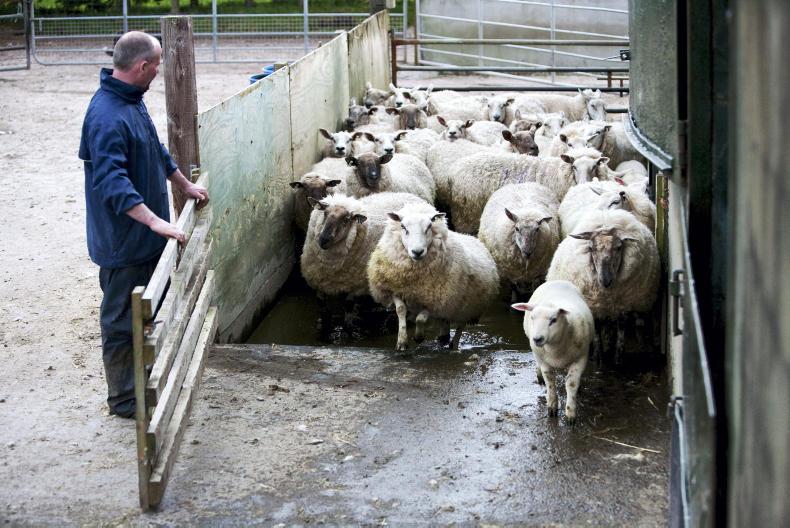

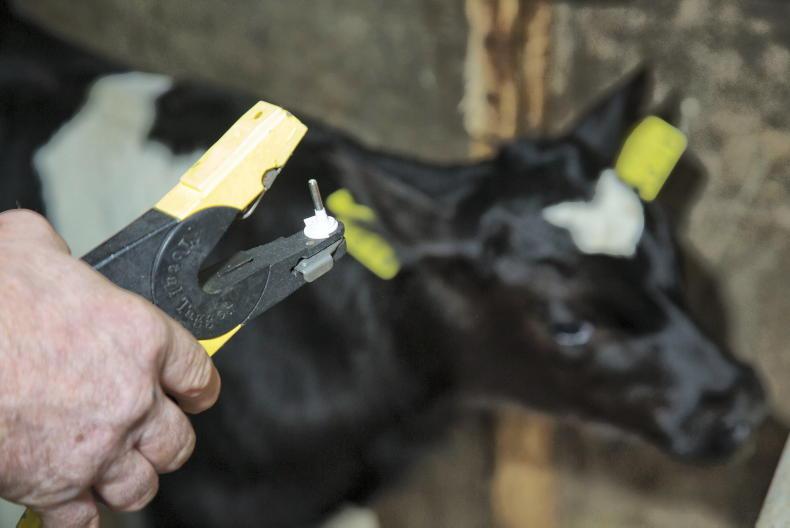

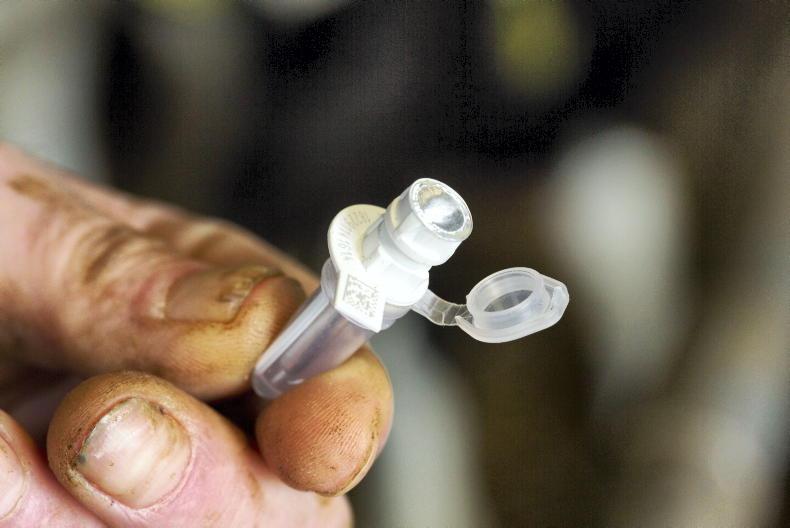
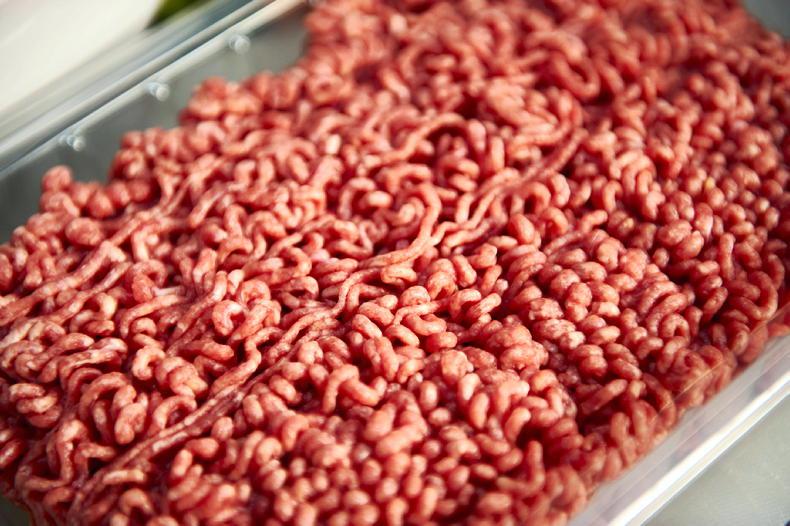
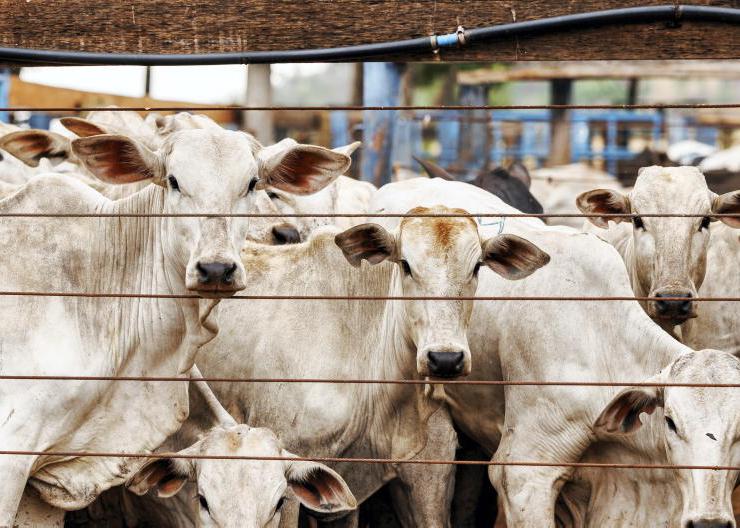
SHARING OPTIONS